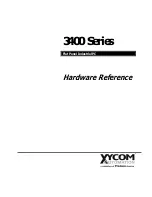
RRS-2 Technical Manual 7
© 2010 CBS ArcSafe
®
2012-04-18
1.1.2 Control Assembly
The RRS-2 control assembly includes the pendant station (Fig. 1.3) and control cabinet (Fig. 1.4).
Pendant Station (Fig. 1.1.7, Fig. 1.3)
The pendant station controls the tooling assembly. There are many different types of pendant stations
available including the PS-2 (2 button), PS-4 (4 button), PS-R4 (radio remote 4 button), PS-R6 (radio
remote 6 button). On the wired models the 25’ pendant retractile cord connects the pendant station to
the control cabinet. The cord can be uncoupled from the control cabinet via a screw connector for
storage or to add optional pendant extension cords. Onboard storage of the pendant station and pendant
retractile cord is provided via the frame storage hooks or the storage bag. The pendant station and
pendant retractile cord can be replaced with an optional radio remote system, consisting of a radio
remote pendant station and receiver.
Emergency Stop Pushbutton
When the red emergency stop pushbutton is depressed the unit is deactivated, but NOT turned
off. In order to resume normal operation the pushbutton must be turned counterclockwise.
Pendant Retractile Cord (Fig. 1.1.13)
The pendant retractile cord allows for the operator of the RRS-2 to distance themselves from the breaker
during the racking/unracking operations.
DANGER!
*The pendant retractile cord may not remove the service personnel from the arcflash area in
some circumstances. Attention should be given to distance, angle, and personal protective
equipment (PPE). If the operator cannot leave the arcflash area with the length of the cable,
we offer extension cables, radio remote pendant stations, and wireless video systems to
ensure that the operator can be as far away from the racking/unracking operation as needed
for safety.
Control Cabinet (Fig. 1.1.8, Fig. 1.4)
The primary function of the control cabinet is to house and protect the system controls and power supply.
Additional controls, including the main power switch and controls for optional equipment are located on
the control cabinet.
Cabinet Access (Fig. 1.1.14)
The control cabinet can be opened using a flat-head screwdriver to unlock the cabinet. The cabinet
houses the control wiring, and battery for the RRS-2.
1.1.3 Tooling Assembly
The components of the RRS-2 tooling assembly are dependent on the circuit breaker being racked
however the components generally include the main and secondary linear actuators and the tooling that
adapts the actuators to the circuit breaker racking mechanism.
Main Actuator (Fig. 1.1.5)
– The main actuator supplies the driving force needed to reposition switchgear.
There are two models available the standard 600 ft lb (80 m-kg) and the optional 1200 ft lb (170 m-kg)
actuator. They both use an internal clutch to limit force available to prevent over racking. The actuator
attaches to the RRS-2 via the slide rail, and can easily be repositioned with the lever locks (Fig. 2-4).
Secondary Actuator (Fig. 1.5)
– The secondary actuator is generally used on the circuit breakers interlocks
and supplies the driving force needed to engage circuit breaker interlock devices which are normally
actuated manually by the operator. Mounting of the secondary linear actuator is dependent on the
circuit breaker type.












































